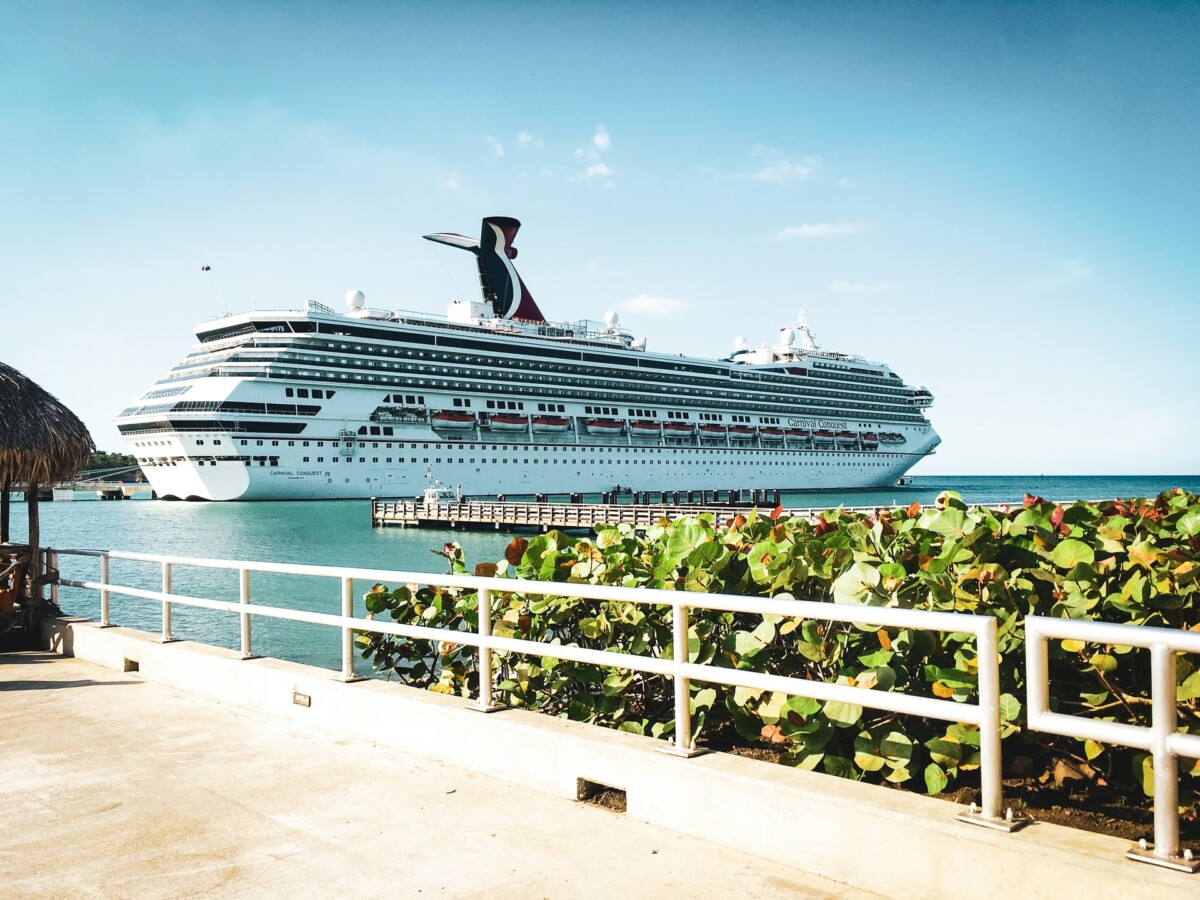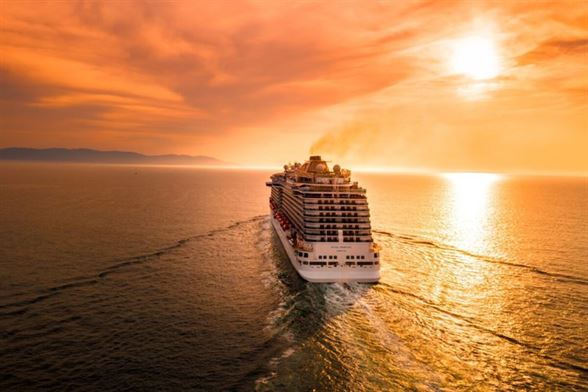How Cruise Ships are Becoming More Environmentally-Friendly

Taking a cruise is an exciting way to see the world, explore new cultures, and meet new people. But it hasn’t always been the most environmentally-friendly way to enjoy a vacation.
Historically, cruise lines have faced backlash from environmental groups due to their impact on the environment. A few areas of concern have kept this conversation going, urging the owners of these cruise lines to reduce their carbon footprint, pollution emissions, and waste disposal.
As travel begins to ramp up again for the summer, more travelers will take to the seas to scratch their wanderlust itch. If you’re looking for a cruise for your next trip, you may be wondering what your impact on the environment is.
To see the progress cruise lines have been making over recent years, it’s important to understand what areas of improvement exist. Now’s your chance to unpack some of the environmental drawbacks that cruise lines have faced for decades and learn more about your carbon footprint while traveling.
While cruise lines are doing their part, you can also step up to make a difference in the environment as you explore the world.
From innovative technologies and improved waste management to the elimination of single-use plastics, find out how cruise lines are becoming a more eco-friendly travel option.
On-going Environmental Drawbacks of Cruise Ships
Cruise ships use a considerable amount of energy in order to provide the comforts and entertainment provided on their journeys. But with high consumption of energy comes elevated carbon footprints, air pollution, and waste.
Your Carbon Footprint Increases
Cruise ships have been described as ‘floating cities’ — they’re high-density living environments designed to meet your comfort and needs. When you hop aboard a cruise ship, your footprint becomes around 3 times as high as it is on land — as you eat, sleep, and live on a ship you consume more energy than you would traveling via car or plane.
They Emit High Levels of Air Pollution
A mid-sized cruise ship can use as much as 150 tonnes of fuel a day. This is due to ships running their engines 24 hours a day, even when they’re in ports. The amount of pollution being emitted is typically equal to 1 million cars.
They’re Allowed to Dump in the Ocean
The U.S. allows cruise ships to dump treated waste when they’re within three and a half miles of shoreline. Once a ship is beyond that point, they’re allowed to dump untreated sewage into U.S. ocean waters.
More than a billion gallons of sewage are dumped into the ocean each year. This includes human waste, pharmaceuticals, and chemicals, which harm marine animals.
How Cruise Lines are Making Changes
Cruise lines recognize that changes need to be made and are focusing their efforts on becoming more environmentally and economically friendly. They’re taking steps to use more earth-friendly fuels, limit waste, and significantly reduce plastic use.
And as they make these changes, nothing is lost in terms of your experience onboard. If anything, they’re enabling you to travel in a more eco-friendly way while still enjoying yourself, taking in the sea air, and exploring new destinations.
1. Ships are Becoming More Fuel Efficient
Cruise lines are working towards using alternative fuels and finding ways to use energy more efficiently. While some cruise lines are finding ways to incorporate gas exhaust cleaning systems, others are venturing into using biodegradable fuel in their ships.
For example, Hurtigruten was one of the first lines to start utilizing liquified biogas (LBG), which is made from dead fish and other organic waste. Norwegian Cruise Lines has also embraced the use of LBG in a number of their ships.
Other cruise lines like Seabourn have invested in newer and more ecologically-efficient ships. Cabins now feature low-flow toilets, sinks, and showers. Disney has also taken steps like reducing surface resistance in open water with a special non-toxic hull coating.
2. More Ships are Tapping Into Shore Power Capabilities
There’s been a significant shift in cruise lines making commitments to pursuing zero carbon emissions by 2050. Recently, the Cruise Lines International Association (CLIA) confirmed its promise to find alternatives to fossil fuels.
CLIA represents 50 major cruise lines, including Royal Caribbean, Carnival, Oceania, and Princess. While all cruise lines under the CLIA name are exploring innovative ways to reduce their carbon footprint, one promise CLIA has made involves partnering with cities and ports.
Shoreside power allows ships to turn off their engines and plug into an electrical grid while at a port. The source of power can come from an electric utility company, diesel fuel, or renewable energy.
3. They’re Limiting Their Waste
Technology and ecological innovations are helping clean up what cruise lines emit into the atmosphere, and a more sustainable approach is improving how they handle their waste.
Wastewater treatment is an important piece of this — how sewage water is treated needs to be safe enough to go back into the ocean. All cruise lines represented by CLIA are now expected to be equipped with purification systems.
When it comes to solid waste like food, cruise lines like Carnival and Crystal incinerate their waste on board before taking it to a designated location onshore to fully dispose of it. Ships are also now asking passengers to provide their meal choices ahead of time to avoid food waste.
Other cruise lines like Disney, Holland, and Silversea donates dozens of items like furniture, linens, appliances, and clothing to charity instead of sending them to landfills.
4. Single-Use Plastics are Being Eliminated
Recycling and completely cutting out plastics on board have become a large focus of many cruise lines. Cruise lines have been replacing straws, plastic utensils, and plastic water bottles with sustainable alternatives like reusable cutlery, aluminum bottles, and water dispensing stations.
Norwegian’s ships have eliminated all plastics across their entire fleet while Royal Caribbean utilizes compostable materials and other reusable options.
Disney Cruise Lines take pride in their plastic reduction efforts — since 2014 they’ve eliminated more than 2,100 tons of metals, glass, plastic, and paper from traditional waste streams.
5. Crews are Trained to be More Eco-Conscious
Crew members aboard cruise ships are now being trained to look for opportunities to recycle and spearhead eco-conscious choices. Cleaning crews are also using environmentally-friendly products.
Many major cruise lines like MSC, Cunard, Disney, and Holland put their crew members through training sessions that outline how to separate waste and lead passengers to uphold eco-friendly practices. It’s becoming increasingly common for ships to have officers on board to supervise environmental safety programs.
Aside from conscious crew members, most cruise lines are otherwise empowering their passengers to take initiative in how they’re disposing of their waste by placing especially marked containers throughout ships to prompt how to recycle and throw away waste properly.
Embrace the Freedom of Van Life
While cruising has not always been considered to be the most eco-friendly way to travel and see the world, change is on the horizon. While we’re in the early stages of a new, greener era of cruising the seas, cruise lines are optimistic about their eco-friendly efforts.
As the biggest cruise companies work towards zero greenhouse emissions by 2050, they’re leading the charge for other cruise lines to follow suit. As a traveler, you can feel more confident about your carbon footprint when you choose to board a ship for your next great adventure.
And there are other ways you can take care of the planet while you travel, with many environmentally-conscious options for you. If you’re up for a journey by land, a great way to travel is by van!
Learn more about the benefits of van life >
Get Travel Deals Today!


